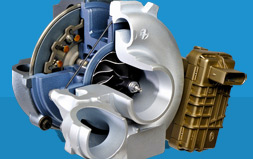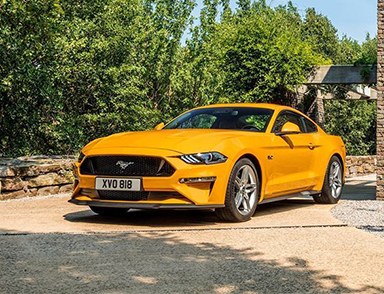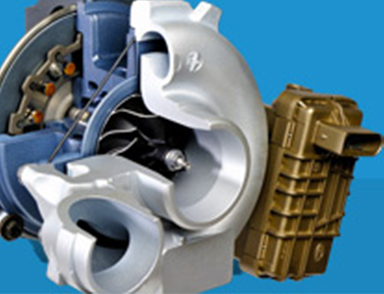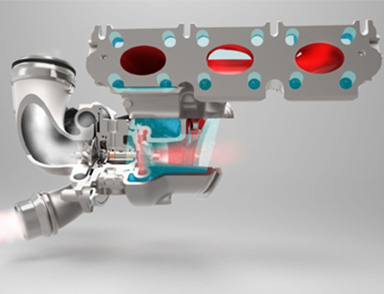
Electric actuation, compared to pneumatic actuation, provides a faster and more responsive control for diesel VNT™ turbos and gasoline wastegate turbos in both passenger and commercial vehicles segments.
Engine range
Electric actuation is a growing feature of turbo control in gasoline powertrains from 0.8L to 3.5L and in diesel engines powering both passenger cars (from 1.4L) and commercial vehicles (up to 15.0L).
Key Features
REA is an electro mechanical device mounted on the compressor housing and connected to the VNT (for diesel applications) or the wastegate (for gasoline applications). In diesel applications, the electronic control of diesel fuel injection in recent years precipitated the need for the electronic control of airflow. Working in conjunction with Honeywell VNT turbos, the REA provides this control in both steady state and transient mode by knowing and controlling the vane position. It communicates with the Engine Management Unit (EMU) in either analogue, PWM or CAN form, receiving and carrying out instructions instantaneously. In gasoline applications, REA works through the control of the wastegate.
Key Benefits
Electric actuation offers faster response than its pneumatic counterpart – using as little as one third of the time (150 millisecond vs.500 millisecond), and the overall turbo control is more precise due to on-board position sensing. The faster response and more precise control help improve engine performance, fuel efficiency and emissions control.
Since REA does not rely on the engine as a pressure source, and with fewer vehicles in the future requiring vacuum systems, it liberates the turbo from its dependence on such systems and results in simpler engine architecture.
Finally, REA can be designed to provide enhanced diagnostic capabilities, leading to better system reliability.
Evolution and Future Trends
In the late 1990s, BMW became the first passenger car manufacturer to adopt Honeywell Rotary Electric Actuation integrated into the VNT turbo, and in 2002, Hino became the first company to deploy this technology for heavy-duty applications. Since then, the output power of electric actuators has increased around three-fold and the response time has been reduced significantly. These lead to smaller-sized actuators with better cost advantage. Electric actuators for commercial vehicle turbos tend to be intelligent types with brushless motors (for durability and reliability), while their PV counterparts tend to feature brushed motors and can be either the intelligent or the simple type.
For diesel passenger cars, the engine downsizing trend will continue to drive the development of smaller, simpler and more economical actuators for VNT turbos. For wastegate gasoline turbos, emissions regulations are driving the replacement of pneumatic actuators by rotary electric actuators, which offer better perceived value, more flexibility and similar overall system cost. For commercial vehicles, on-board diagnostics and brushless motors are here to stay, and there is a trend toward actuators (air cooled today) that are water cooled.


